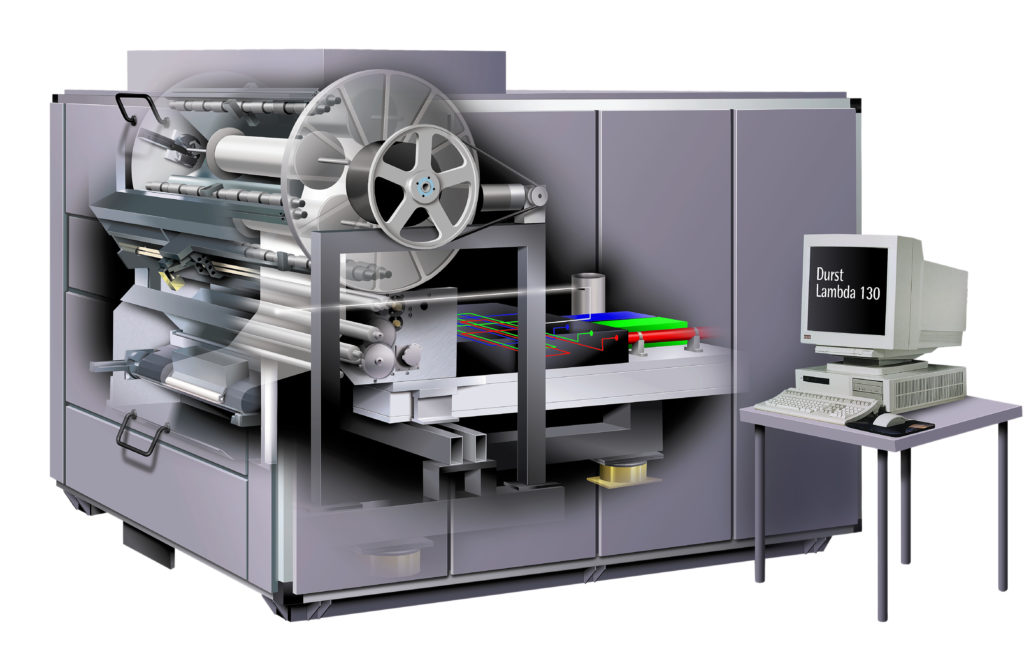When the digital image lives side by side with conventional photography
Digital enlargements on conventional photographic paper
With a classic enlargement, the negative or the positive are projected onto sensitive paper; the bigger the enlargement, the more the diffusion of the light causes losses of precision. This is completely different with a digital picture. It can be printed by an enlarger that uses three light beams (laser or LED) with the colours blue, green and red, to expose the image dot by dot on the silver grain of the photographic paper, without any loss of definition.
Digital data perpetuated thanks to conventional photography
Access to digital data, stored on magnetic tapes or on laser-burned discs necessitates the use of a specific CD player which will certainly no longer exist in a decade or two. Furthermore, the risk that these materials will degrade is high and requires constant attention. In order to avoid this risk, Professor Rudolf Gschwind, of the Imaging and Media Lab at the University of Basle, devised a laser digital data recording system on conventional microfilms, where the information can be viewed permanently, without any special equipment.
In order to guarantee the best possible conservation, Professor Gwschwind chose a photographic process known for its longevity, Ilfochrome. Contrary to chromogenous photographic processes, where the colourings are assembled during development, Ilfochrome, launched under the name of Cibachrome, reduces a quantity of stable colouring contained in the sensitive layers to constitute the image, which ensures it exceptional longevity.


